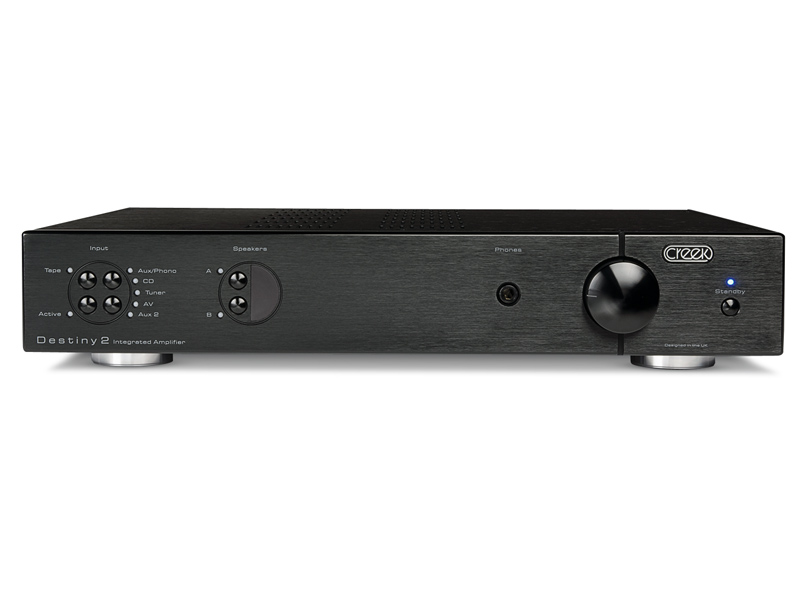TechRadar Verdict
Pros
- +
Excellent tonal balance
- +
Gorgeous, effortless detail
Cons
- -
Some listeners may find this amp too laid back, for its own good
Why you can trust TechRadar
Creek describes this model as its 'high-end' offering: that's relative, of course, but it's certainly true that this is the fanciest and most highly specified model ever made by the stalwart of sensible audio that is Creek.
It's a very solid device externally, quite slimline, surprisingly heavy, and very smart, thanks to its use of brushed aluminium for top, front and side panels. Fit and finish are excellent throughout and although it lacks the super-thick front panel that's the usual fitment for true high-end audio, it otherwise looks the part to an admirable degree.
It's heavy because there's a lot going on inside. A large mains transformer is needed to support the generous power rating and, of course, decent-size heatsinks for the same reason. There's also a remarkably large bank of capacitors, something we've come to recognise as a Creek hallmark: the idea is that ten small capacitors connected in parallel make a more nearly ideal component (lower stray resistance) than one single unit of ten times the value.
The circuitry is quite complex, a fair bit of it being for protection against various overload scenarios. Inputs and outputs are typical, with a phono stage being an optional extra, but there's one feature you don't often find, hinted at by the front-panel button marked 'Active'.

The preamp section of the Destiny 2 can be configured as either passive (no actual amplification) or active with gain of 3, 6 or 9dB. We used passive mode for most listening; active seemed to us a touch brighter, but also very slightly less detailed. No big deal, though.
Sound quality
Over and over again, to an almost comical extent, our listeners commented on how well-balanced this amplifier is. They clearly meant this in more than one sense, both the obvious tonal one and also the subtly different business of balancing the various voices and instruments within a whole.
Sign up for breaking news, reviews, opinion, top tech deals, and more.
That's a very definite plus, but there are other factors; what of rhythm and pace, dynamics, detail and sheer musical involvement?
Interestingly, only the last of these really got a specific mention at all and that favourably. Otherwise, our listeners' language was rather vague, which we've learned from experience is generally a very good sign – a sign that they're too interested in the music to want to write about the sound it makes!
Meanwhile, hints at the detail and other factors suggest that these are all somewhere between good and excellent. Indeed, our subsequent sighted listening to this amp, where a key consideration is making sense of the comments left by the listening panel, soon convinced us that what we have here is indeed an uncommonly harmonious marriage between these attributes, with detail plentiful and dynamics subtly but powerfully effortless.
If you crave the ultimate in pace you might find this amp a little understated, but it's also worth mentioning that performance, if anything, gets even more assured at high levels.
Follow TechRadar Reviews on Twitter: http://twitter.com/techradarreview
